|
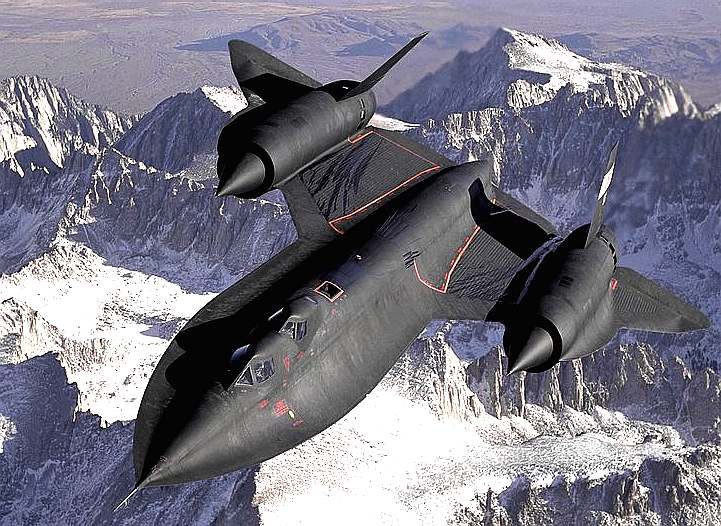
The United States Air Force (USAF) is the aerial warfare service branch of the United States Armed Forces and one of the seven American uniformed services. Initially part of the United States Army, the USAF was formed as a separate branch of the military on 18 September 1947 under the National Security Act of
1947. It is the most recent branch of the U.S. military to be formed, and is the largest and most technologically advanced air force in the world. The USAF articulates its core functions in its 2010 Posture Statement as Nuclear Deterrence Operations, Special Operations, Air Superiority, Global Integrated ISR, Space Superiority, Command and Control, Cyberspace Superiority, Personnel Recovery, Global Precision Attack, Building Partnerships, Rapid Global Mobility and Agile Combat Support.
As of 2009 the USAF operates 5,573 manned aircraft in service (3,990 USAF; 1,213 Air National Guard; and 370 Air Force Reserve); approximately 180 unmanned combat air vehicles, 2,130 air-launched cruise missiles, and 450 intercontinental ballistic missiles. The USAF has 330,159 personnel on active duty, 68,872 in the Selected and Individual Ready Reserves, and 94,753 in the Air National Guard as of September 2008. In addition, the USAF employs 151,360 civilian personnel, and has over 60,000 auxiliary members in Civil Air Patrol, making it the largest air force in the world.
The Department of the Air Force is headed by the civilian Secretary of the Air Force, who is appointed by the President with the advice and consent of the Senate, and has the authority to conduct all of its affairs, subject to the authority, direction and control of the Secretary of Defense. The Department of the Air Force is a Military Department within the Department of Defense, and it includes all elements of the United States Air Force, i.e. the technical designation of the U.S. Air Force organization. The highest-ranking military officer in the Department of the Air Force is the Chief of Staff of the Air Force who exercises supervision over Air Force units, and serves as a member of the Joint Chiefs of Staff. Air Force combat forces are assigned, as directed by the Secretary of Defense, to the Combatant Commanders, and neither the Secretary of the Air Force nor the Chief of Staff have operational command authority over them.
MISSION,
VISION and FUNCTIONS
Mission
According to the National Security Act of 1947 (61 Stat. 502), which created the USAF:
In general the United States Air Force shall include aviation forces both combat and service not otherwise assigned. It shall be organized, trained, and equipped primarily for prompt and sustained offensive and defensive air operations. The Air Force shall be responsible for the preparation of the air forces necessary for the effective prosecution of war except as otherwise assigned and, in accordance with integrated joint mobilization plans, for the expansion of the peacetime components of the Air Force to meet the needs of war.
§8062 of Title 10 US Code defines the purpose of the USAF as:
to preserve the peace and security, and provide for the defense, of the United States, the Territories, Commonwealths, and possessions, and any areas occupied by the United States;
to support national policy;
to implement national objectives; to overcome any nations responsible for aggressive acts that imperil the peace and security of the United States.
The stated mission of the USAF today is to "fly, fight, and win in air, space, and cyberspace".

Vision
"The United States Air Force will be a trusted and reliable joint partner with our sister services known for integrity in all of our activities, including supporting the joint mission first and foremost. We will provide compelling air, space, and cyber capabilities for use by the combatant commanders. We will excel as stewards of all Air Force resources in service to the American people, while providing precise and reliable Global Vigilance, Reach and Power for the nation".
Core Functions
Recently the Air Force refined its understanding of the core duties and responsibilities it performs as a Military Service Branch, streamlining what previously were six distinctive capabilities and seventeen operational functions into twelve core functions to be used across the doctrine, organization, training, equipment, leadership, and education, personnel, and facilities spectrum. These core functions express the ways in which the Air Force is particularly and appropriately suited to contribute to national security, but they do not necessarily express every aspect of what the Air Force contributes to the nation. It should be emphasized that the core functions, by themselves, are not doctrinal constructs.
Nuclear Deterrence Operations
The purpose of Nuclear Deterrence Operations (NDO) is to operate, maintain, and secure nuclear forces to achieve an assured capability to deter an adversary from taking action against vital US interests. In the event deterrence fails, the US should be able to appropriately respond with nuclear options. The sub-elements of this function are:
Assure/Dissuade/Deter is a mission set derived from the Air Force’s readiness to carry out the nuclear strike operations mission as well as from specific actions taken to assure allies as a part of extended deterrence. Dissuading others from acquiring or proliferating WMD, and the means to deliver them, contributes to promoting security and is also an integral part of this mission. Moreover, different deterrence strategies are required to deter various adversaries, whether they are a nation state, or non-state/transnational actor. The Air Force maintains and presents credible deterrent capabilities through successful visible demonstrations and exercises which assure allies, dissuade proliferation, deter potential adversaries from actions that threaten US national security or the populations and deployed military forces of the US, its allies and friends.
Nuclear strike is the ability of nuclear forces to rapidly and accurately strike targets which the enemy holds dear in a devastating manner. If a crisis occurs, rapid generation and, if necessary, deployment of nuclear strike capabilities will demonstrate US resolve and may prompt an adversary to alter the course of action deemed threatening to our national interest. Should deterrence fail, the
President may authorize a precise, tailored response to terminate the conflict at the lowest possible level and lead to a rapid cessation of hostilities. Post-conflict, regeneration of a credible nuclear deterrent capability will deter further aggression. The Air Force may present a credible force posture in either the continental US, within a theater of operations, or both to effectively deter the range of potential adversaries envisioned in the 21st century. This requires the ability to engage targets globally using a variety of methods; therefore, the Air Force should possess the ability to induct, train, assign, educate and exercise individuals and units to rapidly and effectively execute missions that support US NDO objectives. Finally, the Air Force regularly exercises and evaluates all aspects of nuclear operations to ensure high levels of performance.
Nuclear surety ensures the safety, security and effectiveness of nuclear operations. Because of their political and military importance, destructive power, and the potential consequences of an accident or unauthorized act, nuclear weapons and nuclear weapon systems require special consideration and protection against risks and threats inherent in their peacetime and wartime environments. The Air Force, in conjunction with other entities within the Departments of Defense or Energy, achieves a high standard of protection through a stringent nuclear surety program. This program applies to materiel, personnel, and procedures that contribute to the safety, security, and control of nuclear weapons, thus assuring no nuclear accidents, incidents, loss, or unauthorized or accidental use (a Broken Arrow incident). The Air Force continues to pursue safe, secure and effective nuclear weapons consistent with operational requirements. Adversaries, allies, and the American people must be highly confident of the Air Force’s ability to secure nuclear weapons from accidents, theft, loss, and accidental or unauthorized use. This day-to-day commitment to precise and reliable nuclear operations is the cornerstone of the credibility of the NDO mission. Positive nuclear command, control, communications; effective nuclear weapons security; and robust combat support are essential to the overall NDO function.
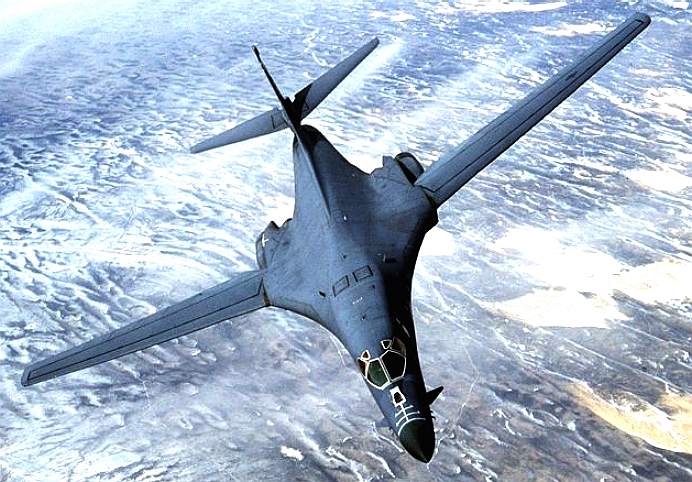
Air Superiority
Air Superiority is “that degree of dominance in the air battle of one force over another which permits the conduct of operations by the former and its related land, sea, air, and special operations forces at a given time and place without prohibitive interference by the opposing force” (JP 1-02).
Offensive Counterair (OCA) is defined as "offensive operations to destroy, disrupt, or neutralize enemy aircraft, missiles, launch platforms, and their supporting structures and systems both before and after launch, but as close to their source as possible" (JP 1-02). OCA is the preferred method of countering air and missile threats, since it attempts to defeat the enemy closer to its source and typically enjoys the initiative. OCA comprises attack operations, sweep, escort, and suppression/destruction of enemy air defense.
Defensive Counterair (DCA) is defined as “all the defensive measures designed to detect, identify, intercept, and destroy or negate enemy forces attempting to penetrate or attack through friendly airspace” (JP 1-02). A major goal of DCA operations, in concert with OCA operations, is to provide an area from which forces can operate, secure from air and missile threats. The DCA mission comprises both active and passive defense measures. Active defense is “the employment of limited offensive action and counterattacks to deny a contested area or position to the enemy” (JP 1-02). It includes both ballistic missile defense and air breathing threat defense, and encompasses point defense, area defense, and high value airborne asset defense. Passive defense is “measures taken to reduce the probability of and to minimize the effects of damage caused by hostile action without the intention of taking the initiative” (JP 1-02). It includes detection and warning; chemical, biological, radiological, and nuclear defense; camouflage, concealment, and deception; hardening; reconstitution; dispersion; redundancy; and mobility, counter-measures, and stealth.
Airspace control is “a process used to increase operational effectiveness by promoting the safe, efficient, and flexible use of airspace” (JP 1-02). It promotes the safe, efficient, and flexible use of airspace, mitigates the risk of fratricide, enhances both offensive and defensive operations, and permits greater agility of air operations as a whole. It both deconflicts and facilitates integration of joint air operations.
Space Superiority
Space superiority is “the degree of dominance in space of one force over another that permits the conduct of operations by the former and its related land, sea, air, space, and special operations forces at a given time and place without prohibitive interference by the opposing force” (JP 1-02). Space superiority may be localized in time and space, or it may be broad and enduring. Space superiority provides freedom of action in space for friendly forces and, when directed, denies the same freedom to the adversary.
Space Force Enhancement is defined as the “combat support operations and force-multiplying capabilities delivered from space systems to improve the effectiveness of military forces as well as support other intelligence, civil, and commercial users. This mission area includes: intelligence, surveillance, and reconnaissance; integrated tactical warning and attack assessment; command, control, and communications; positioning, navigation, and timing; and environmental monitoring” (JP 1-02).
Space Force Application is defined as “combat operations in, through, and from space to influence the course and outcome of conflict. This mission area includes ballistic missile defense and force projection” (JP 1-02).
Space Control is defined as “operations to ensure freedom of action in space for the US and its allies and, when directed, deny an adversary freedom of action in space. This mission area includes: operations conducted to protect friendly space capabilities from attack, interference, or unintentional hazards (defensive space control); operations to deny an adversary’s use of space capabilities (offensive space control); and the requisite current and predictive knowledge of the space environment and the operational environment upon which space operations depend (space situational awareness)” (JP 1-02).
Space Support is defined as “operations to deploy and sustain military and intelligence systems in space. This mission area includes: launching and deploying space vehicles; maintaining and sustaining spacecraft on-orbit, rendezvous and proximity operations; disposing of (including de-orbiting and recovering) space capabilities; and reconstitution of space forces, if required” (JP 1-02).
Cyberspace Superiority
Cyberspace Superiority is “the operational advantage in, through, and from
cyberspace to conduct operations at a given time and in a given domain without prohibitive interference” (AFDD 3–12, Cyberspace Operations).
Cyberspace Force Application is combat operations in, through, and from cyberspace to achieve military objectives and influence the course and outcome of conflict by taking decisive actions against approved targets. It will incorporate computer network attack (CNA), computer network exploitation (CNE), and may involve aspects of influence operations. It is highly dependent on ISR, fused all-source intelligence, sophisticated attribution activities, situational awareness, and responsive C2.
This is the passive, active, and dynamic employment of capabilities to respond to imminent or on-going actions against Air Force or Air Force-protected networks, the Air Force's portion of the Global Information Grid, or expeditionary communications assigned to the Air Force. Cyberspace defense incorporates CNE, computer network defense (CND), and CNA techniques and may be a contributor to influence operations. It is highly dependent upon ISR, fused all-source intelligence, automated indications and warning, sophisticated attribution/characterization, situational awareness, assessment, and responsive C2.
Cyberspace Support is foundational, continuous, or responsive operations ensuring information integrity and availability in, through, and from Air Force-controlled infrastructure and its interconnected analog and digital portion of the battle space. Inherent in this mission is the ability to establish, extend, secure, protect, and defend in order to sustain assigned networks and missions. This includes protection measures against supply chain components plus critical C2 networks/communications links and nuclear C2 networks. The cyberspace support mission incorporates CNE and CND techniques. It incorporates all elements of Air Force Network Operations, information transport, enterprise management, and information assurance, and is dependent on ISR and all-source intelligence.
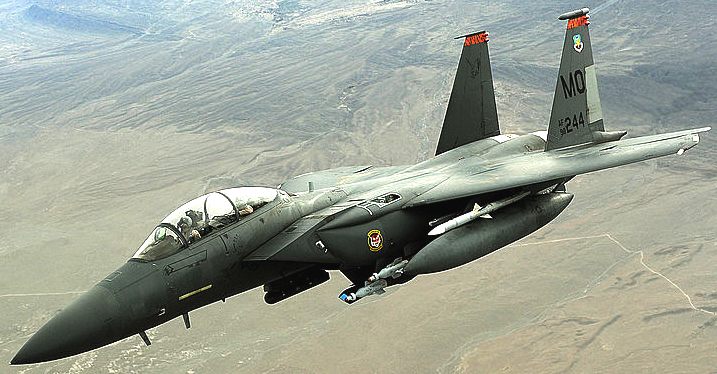
Command and Control
Command and control is “the exercise of authority and direction by a properly designated commander over assigned and attached forces in the accomplishment of the mission. Command and control functions are performed through an arrangement of personnel, equipment, communications, facilities, and procedures employed by a commander in planning, directing, coordinating, and controlling forces and operations in the accomplishment of the mission” (JP 1-02). This core function includes all of the C2-related capabilities and activities associated with air, space, cyberspace, nuclear, and agile combat support operations to achieve strategic, operational, and tactical objectives.
At the Strategic Level Command and Control, the US determines national or multinational security objectives and guidance, and develops and uses national resources to accomplish these objectives. These national objectives in turn provide the direction for developing overall military objectives, which are used to develop the objectives and strategy for each theater.
At the Operational Level Command and Control, campaigns and major operations are planned, conducted, sustained, and assessed to accomplish strategic goals within theaters or areas of operations. These activities imply a broader dimension of time or space than do tactics; they provide the means by which tactical successes are exploited to achieve strategic and operational objectives.
Tactical Level Command and Control is where individual battles and engagements are fought. The tactical level of war deals with how forces are employed, and the specifics of how engagements are conducted and targets attacked. The goal of tactical level C2 is to achieve commander's intent and desired effects by gaining and keeping offensive initiative.
[edit] Global Integrated ISRGlobal Integrated Intelligence, Surveillance, and Reconnaissance (ISR) is the synchronization and integration of the planning and operation of sensors, assets, and processing, exploitation, dissemination systems across the globe to conduct current and future operations.
Planning and Directing is “the determination of intelligence requirements, development of appropriate intelligence architecture, preparation of a collection plan, and issuance of orders and requests to information collection agencies” (JP 2-01, Joint and National Intelligence Support to Military Operations). These activities enable the synchronization and integration of collection, processing, exploitation, analysis, and dissemination activities/resources to meet information requirements of national and military decision makers.
Collection is “the acquisition of information and the provision of this information to processing elements” (JP 2-01). It provides the ability to obtain required information to satisfy intelligence needs (via use of sources and methods in all domains). Collection activities span the ROMO.
Processing and exploitation is “the conversion of collected information into forms suitable to the production of intelligence” (JP 2-01). It provides the ability, across the ROMO, to transform, extract, and make available collected information suitable for further analysis or action.
Analysis and production is “the conversion of processed information into intelligence through the integration, evaluation, analysis, and interpretation of all source data and the preparation of intelligence products in support of known or anticipated user requirements” (JP 2-01). It provides the ability to integrate, evaluate, and interpret information from available sources to create a finished intelligence product for presentation or dissemination to enable increased situational awareness.
Dissemination and Integration is “the delivery of intelligence to users in a suitable form and the application of the intelligence to appropriate missions, tasks, and functions” (JP 2-01). It provides the ability to present information and intelligence products across the ROMO enabling understanding of the operational environment to military and national decision makers.
Global Precision Attack
Global Precision Attack is the ability to hold at risk or strike rapidly and persistently, with a wide range of munitions, any target and to create swift, decisive, and precise effects across multiple domains. The USAF lacks sufficient survivable stealthy strategic range aircraft in order to deal with Iran, China or North Korea.
Strategic Attack is defined as “offensive action specifically selected to achieve national strategic objectives. These attacks seek to weaken the adversary's ability or will to engage in conflict, and may achieve strategic objectives without necessarily having to achieve operational objectives as a precondition” (AFDD 3–70, Strategic Attack).
Air Interdiction is defined as “air operations conducted to divert, disrupt, delay, or destroy the enemy's military potential before it can be brought to bear effectively against friendly forces, or to otherwise achieve JFC objectives. Air lnterdiction is conducted at such distance from friendly forces that detailed integration of each air mission with the fire and movement of friendly forces is not required” (AFDD 3-03, Counterland Operations).
Close Air Support is defined as “air action by fixed- and rotary-winged aircraft against hostile targets that are in close proximity to friendly forces and which require detailed integration of each air mission with the fire and movement of those forces” (JP 1-02). This can be as a pre-planned event or on demand from an alert posture (ground or airborne). It can be conducted across the
ROMO.
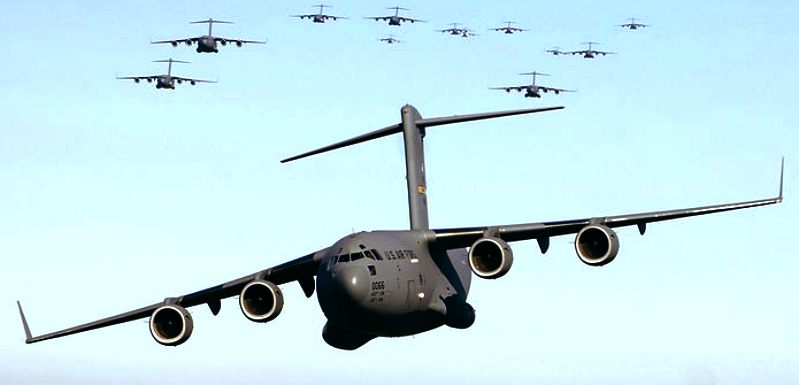
Special
Operations
Special Operations are “operations conducted in hostile, denied, or politically sensitive environments to achieve military, diplomatic, informational, and/or economic objectives employing military capabilities for which there is no broad conventional force requirement. These operations may require covert, clandestine, or low-visibility capabilities. Special operations are applicable across the ROMO. They can be conducted independently or in conjunction with operations of conventional forces or other government agencies and may include operations through, with, or by indigenous or surrogate forces. Special operations differ from conventional operations in degree of physical and political risk, operational techniques, mode of employment, independence from friendly support, and dependence on detailed operational intelligence and indigenous assets” (JP 1-02).
Agile Combat Support is the capability to effectively create, prepare, deploy, employ, sustain, and protect Air Force Special Operations Command (AFSOC) Airmen, assets, and capabilities throughout the ROMO at a chosen initiative, speed, and tempo.
Aviation Foreign Internal Defense operations directly execute US security and foreign policy as lead airpower elements that shape the battlefield and conduct stability operations to enable global reach and strike. This is accomplished by applying the mission set (assess, train, advise, and assist foreign aviation forces) across a continuum of operating venues described as indirect assistance, direct assistance (not including combat) and combat operations.
Battlefield Air Operations is a unique set of combat proven capabilities (combat control, pararescue, combat weather, and tactical air control party) provided by regular and reserve component special operations forces (SOF) Battlefield Airmen who integrate, synchronize, and control manned and unmanned capabilities to achieve tactical, operational, and strategic objectives.
Command and Control is the exercise of the commander’s authority and direction over assigned and attached forces by trained, organized, and equipped C2 elements. Operational C2 elements consist of personnel and equipment with specialized capability to plan, direct, coordinate, and control forces in the conduct of joint/combined special operations.
Information Operations is the integrated employment of the capabilities of influence operations, electronic warfare operations, and network warfare operations, in concert with specified integrated control enablers, to influence, disrupt, corrupt, or usurp adversarial human and automated decision making while protecting one’s own.

The
USAF have been experimenting to increase the endurance
of
their pilots for years in the quest for air supremacy.
The
underworld threaten to undermine that objective in a
quest
for
supremacy based on Adolf
Hitler's dreams.
Intelligence, Surveillance, and Reconnaissance is the synchronization and integration of platforms and sensors with the planning and direction, collection, processing and exploitation, analysis, and production and dissemination processes. These activities provide actionable intelligence,
weather, environmental awareness, and prediction across all SOF command echelons.
Military Information Support Operations are planned
to convey selected information and indicators to foreign audiences to influence their emotions, motives, objective reasoning, and ultimately the behavior of foreign governments, organizations, groups, and individuals. The purpose of military information support operations is to induce or reinforce foreign attitudes and behavior favorable to the originator's objectives.
Precision Strike provides CCDRs with an integrated capability to find, fix, track,
target, engage, and assess targets using a single weapons system or a combination of systems. This includes close air support, air interdiction, and armed reconnaissance missions.
Specialized Air Mobility is the conduct of rapid, global infiltration, exfiltration, and resupply of personnel, equipment, and materiel using specialized systems and tactics. These missions may be clandestine, low visibility, or overt and through hostile, denied, or politically sensitive airspace.
Specialized Refueling is the conduct of rapid, global refueling using specialized systems and tactics. This includes aerial refueling of vertical lift aircraft and ground refueling during forward arming and refueling point operations. These missions may be clandestine, low visibility, or overt and in hostile, denied, or politically sensitive environments.
USAF
LINKS
Official
USAF website
Official
USAF Recruiting site
Air
Force Blue Tube
Official
blog: Air Force Live
Searchable
database of Air Force historical reports
USAF
emblems
USAF
Communications Troops
Aircraft
Investment Plan, Fiscal Years (FY) 2011–2040,
Submitted with the FY 2011 Budget
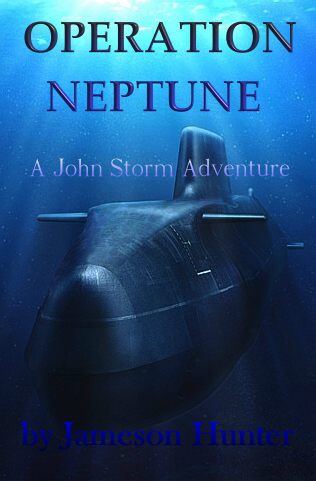
When
a state of the art submarine falls into extremist hands
NATO
calls in John
Storm to disarm the renegade craft.
|




